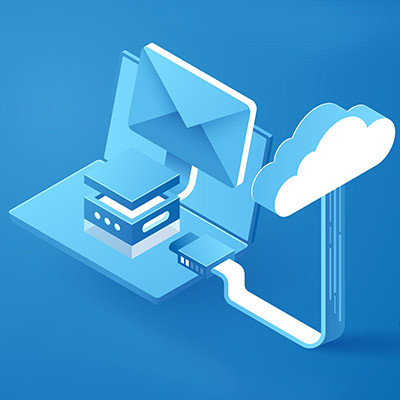You’ve probably seen the word “metaverse” pop up in your news feed at least once or twice over the past couple of months, but the concept can be a bit difficult to understand, as it’s a bit complicated by nature. Let’s discuss what the metaverse is, why it’s important today, and what you might expect from a metaverse in the future.
Phantom Technology Solutions Blog
Communications are important for small businesses, but how much do you pay attention to your telephone system? While it might have been useful in the past, chances are your team members and clients are communicating with you in different ways, rendering your telephone system, more or less, obsolete—at least the traditional telephone systems, anyway.
Compared to other options like Voice over Internet Protocol, or VoIP, traditional telephone solutions are simply outdated in nature and scope. Let’s go over what you need to know about VoIP.
Your business’ operations and performance will vary depending on how you choose to invest your IT resources and budget. If you see marked improvements over the years, then you are doing something right. If things remain the same, however, perhaps you could benefit from a different approach to your technology investments. Let’s examine the subtle art of IT investment and how you should approach it.
Business technology is far from the easiest thing to manage, and it’s mostly because managing technology is not the sole focus of companies (unless you’re us, of course). If you can’t overcome your IT challenges, your business could be held back needlessly. Let’s go over some of the common issues your organization might face with regards to technology management and maintenance.
With all the doom and gloom surrounding cybersecurity, it’s easy to get lost in the negative aspect of technology advancement. That being said, however, we do really love technology, and advancements in smartphone technology, in particular, have made amazing strides and led to great achievements in business and elsewhere. We just wanted to take today to appreciate smartphones and how incredible they are.
As we enter the third quarter of the year, now is as good a time as ever to reevaluate how you are spending your IT budget. According to Gartner, your IT spending might actually be increasing, assuming it’s in line with what your organization wants and needs. Are you being intentional with your IT spending? Where are you investing it? Are you spending it on avenues for continued growth? Gartner’s study might yield some interesting ideas which you can call upon to inform your own spending practices.
More small businesses than ever before are selling products, goods, and services to their loyal customers, which means they need ways to process these transactions. Enter the point of sale system, a business’ preferred tool to process transactions in a retail environment. What goes into a successful point of sale system, and how can you use one for your business?
If we asked you what the difference is between productivity and innovation, would you be able to give us a clear answer? The answer is that one facilitates the other, aided by technology to improve operations and free up employees to focus on other, more lucrative tasks. Let’s take a look at how improving productivity can improve innovation, thereby increasing your organization’s ability to do great things.
If nothing else is certain, then you can bet that the need to improve circumstances or processes gives birth to innovations of all types. Technology has proven this time and again, as new solutions have emerged to solve previously unsolvable issues and challenges not only in the workplace, but in society as a whole. Let’s examine how economic difficulty has driven innovation, specifically in the technology sector.
Remember when you needed a wired connection between two endpoints in order to access important materials for your business? Thanks to wireless connectivity, businesses can now access online materials in a much easier fashion. The question then becomes, how does a wired connection improve your operations, and is it a benefit for your organization?
There are plenty of companies out there making technology investments, and chances are you are ready to take the plunge yourself by investing in the appropriate business technology solutions to take your company to the next level. However, we want to caution you to only invest in the right technologies, those that push your business forward. Here are some tips you can use to make sure you are keeping this strategy at the top of your mind.
E-waste is a considerable problem, and not just for businesses; it’s also terrible for the environment. Let’s go over some of the biggest reasons why discarded electronics, including some of the hardware that you invest so much money into, can be problematic, as well as some ways your organization can reduce its e-waste footprint.
We all know that there are many nuances to managing and maintaining technology in an effective and efficient way, but who exactly is in charge of these tasks at your organization? Do you have a dedicated IT resource that you can trust to get the work done, or do you rely on your other employees to stay afloat? If it’s the latter, we have some bad news for you, as well as a silver lining to it all.
Whether a person works in a factory or in an office environment, people have assumed that machines will eventually come for their jobs. This idea has bred a fear that machines will eventually become smart enough to do what they want to do rather than what we want them to do. This is mostly false, so we want to dispel these fears and explore how automation and other technologies can make your job easier and more efficient.
How often do you look at your email solution and think, “Wow, managing this thing takes up so much of our time. What would it be like to take that time and apply it elsewhere?” Today, businesses have all kinds of options for managing their email communications, one of which is email hosting provided through a managed service provider.
Automation is a great tool for businesses of all types, even smaller organizations that might have limited access to tools and resources. Through the use of time-saving automation solutions, even a small business can empower employees to save time and focus on other aspects of their duties by automating specific tasks and processes. Here are five ways small businesses can use automation to make operations just a little easier.
With today’s ever-expanding remote workforce, there is all the more reason to implement technology solutions that empower your organization to increase its range of options for working outside of the office. We’ve put together three of the key technology solutions we think your organization could benefit from to improve its remote capabilities and take business on the road.
With the Internet of Things growing at a rapid pace, there are many opportunities for your business to reap considerable rewards from its proper utilization. It can automate certain processes, save you capital, and mitigate human error. Let’s examine how your business can use the Internet of Things to its benefit without breaking the bank.




















